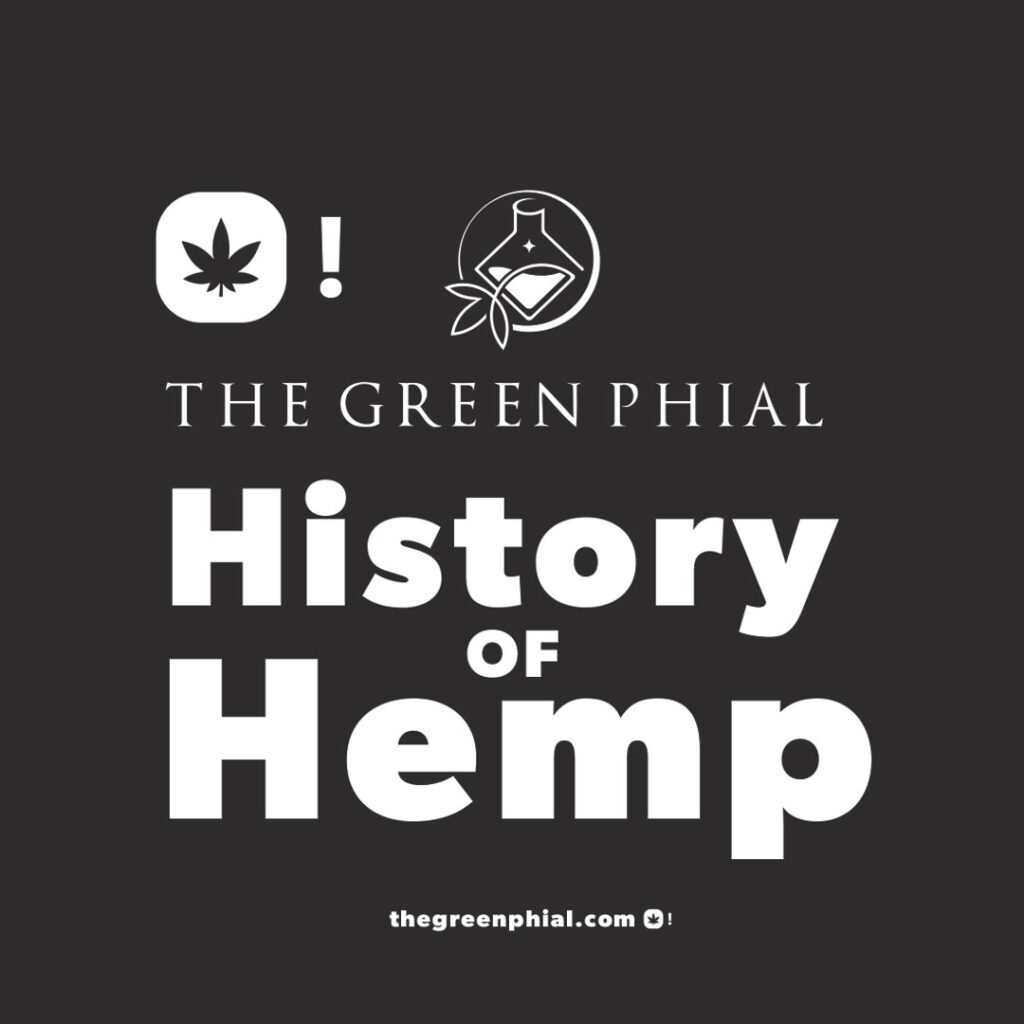The History of Hemp: From Ancient Times to Modern Revival
 Hemp, one of the world’s oldest cultivated plants, has a rich and varied history that spans millennia. From ancient civilizations using it for textiles and medicine to modern movements advocating its potential in sustainability, hemp has long been valued for its versatility and usefulness.
Hemp, one of the world’s oldest cultivated plants, has a rich and varied history that spans millennia. From ancient civilizations using it for textiles and medicine to modern movements advocating its potential in sustainability, hemp has long been valued for its versatility and usefulness.
In this article, we’ll explore the history of hemp, tracing its journey from ancient times to the present day.
Ancient Beginnings of hemp
Hemp’s history dates back thousands of years, with evidence of its use as early as 8,000 BCE.
Origins in Asia of hemp
- China: Hemp was first cultivated in ancient China, where it was used for textiles, paper, and medicine. By 2,700 BCE, hemp was documented in Chinese pharmacopoeia as a treatment for various ailments.
- India: In ancient India, hemp appeared in the sacred texts of Ayurveda as a plant with medicinal and spiritual significance.
The Middle East and Europe hemp use
Hemp spread to the Middle East and Europe via trade routes like the Silk Road. By 1,000 BCE, it was used for rope, clothing, and food in these regions.
Hemp in Early Civilization
Hemp became an integral part of ancient societies due to its numerous applications:
- Textiles: Its fibers were woven into durable fabrics.
- Paper: The world’s first paper, created in China, was made from hemp.
- Food: Hemp seeds were a source of nutrition, rich in protein and essential fatty acids.
- Medicine: Hemp extracts were used to treat pain, inflammation, and other conditions.
Hemp in the Americas
Colonial Era
Hemp arrived in the Americas in the early 1600s, brought by European settlers. It became a staple crop in colonial America for:
- Rope and sails for ships.
- Clothing and bags.
- Early forms of paper.
The U.S. government even encouraged hemp cultivation. During World War II, the “Hemp for Victory” campaign promoted its growth to support the war effort.
The Decline of Hemp
Despite its utility, hemp’s reputation began to decline in the 20th century, largely due to its association with marijuana.
The Marijuana Tax Act of 1937
In the U.S., the Marijuana Tax Act effectively outlawed hemp cultivation by imposing heavy taxes on all cannabis-related products. This was due in part to a growing fear of marijuana and industrial lobbying from competing industries like cotton and synthetic fibers.
The Controlled Substances Act of 1970
Hemp was classified as a Schedule I drug, alongside marijuana, further stifling its production and research.
The Modern Revival
Hemp has seen a resurgence in recent decades, driven by its potential in sustainability, wellness, and industrial applications.
The 2018 Farm Bill
In the United States, the 2018 Farm Bill legalized hemp cultivation at the federal level, provided it contains less than 0.3% THC. This marked a turning point, enabling farmers and businesses to reintroduce hemp into various industries.
Hemp’s Modern Uses
Today, hemp is used for:
- Sustainable Materials: Bioplastics, building materials, and textiles.
- Health and Wellness: CBD oil, hemp seeds, and hemp protein.
- Environmental Benefits: Carbon sequestration and soil regeneration.
Why Hemp Matters Today
Hemp’s versatility and eco-friendly nature make it a valuable resource in addressing modern challenges:
- Sustainability: Hemp grows quickly, requires less water than cotton, and can be grown without pesticides.
- Economic Opportunities: The hemp industry is creating new jobs and markets.
- Health Benefits: Hemp-derived products like CBD are helping people manage stress, pain, and other conditions.
Closing Thoughts
Hemp’s journey from ancient crop to modern marvel highlights its enduring value to humanity. As awareness grows about its potential, hemp is poised to play a pivotal role in building a more sustainable and healthy future.
By embracing hemp’s rich history and exploring its innovative applications, we can honor its past while unlocking its potential for generations to come.
